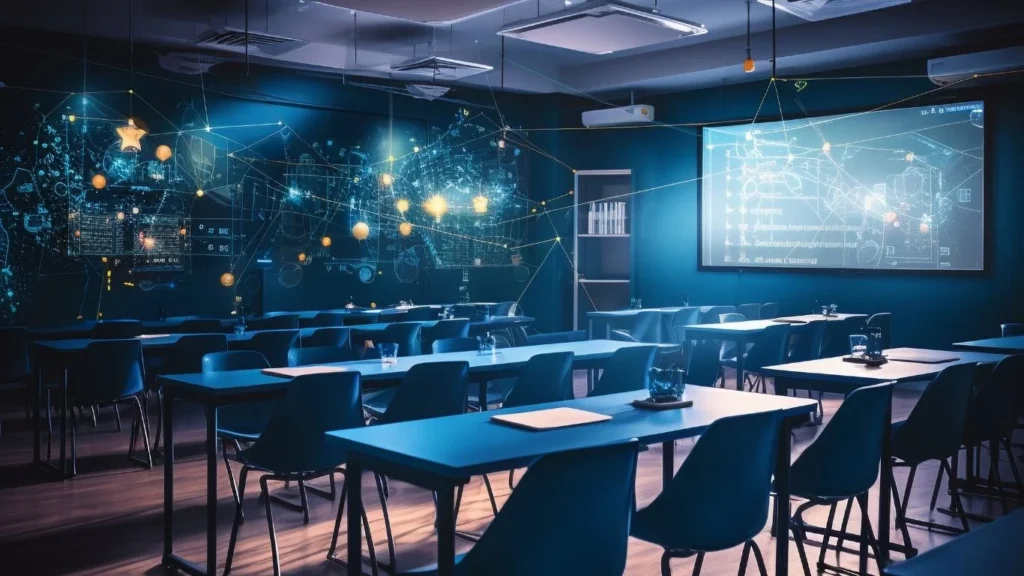Imagine a classroom where technology and creativity blend seamlessly, fostering an environment ripe for innovation. Welcome to Classroom-20X—a revolutionary concept that redefines how we think about learning spaces. Gone are the days of rigid desks and one-size-fits-all teaching methods. In this new era, education becomes a dynamic experience tailored to meet the diverse needs of every student.
Classroom-20X isn’t just about high-tech gadgets or flashy tools; it’s a holistic approach to learning that empowers both educators and learners. Whether you’re an educator looking to enhance your teaching strategies or a parent eager for your child’s success, understanding Classroom-20X is essential. This transformative model promises not only improved educational outcomes but also inspires curiosity and collaborative problem-solving among students.
Let’s dive deeper into what makes Classroom-20X the future of learning environments!
The Evolution of Learning Environments
Learning environments have transformed dramatically over the years. Initially, classrooms were simple spaces filled with rows of desks facing a teacher. This traditional setup emphasized rote memorization and passive learning.
As technology advanced, so did our approach to education. The introduction of computers in schools marked a pivotal shift, encouraging more interactive and collaborative experiences. Classrooms began to evolve into dynamic hubs for creativity and engagement.
With the rise of online learning platforms, flexibility became key. Students could learn at their own pace from anywhere in the world. This new model catered to diverse learning styles, making education more accessible than ever before.
Today’s innovations are pushing boundaries even further. Concepts like Classroom-20X propose immersive environments that blend physical space with digital tools, fostering personalized learning experiences tailored to individual needs. As these shifts continue, the landscape of education is set for even greater transformation.
Benefits of Classroom-20X
Classroom-20X transforms traditional education into an engaging experience. It fosters collaboration among students, breaking down barriers of individual learning.
Personalized learning paths are a key advantage. Each student’s unique needs and strengths can shape their educational journey. This flexibility encourages independence and motivation.
Access to diverse resources is another standout benefit. Digital tools enable instant access to global knowledge, enhancing research opportunities beyond textbooks.
Real-time feedback ensures that educators can address challenges immediately. This continuous assessment helps students stay on track and thrive in their studies.
Classroom-20X promotes critical thinking skills through interactive activities. By challenging assumptions and encouraging debate, students develop essential problem-solving abilities for the future.
How Classroom-20X Works
Classroom-20X integrates cutting-edge technology to create an immersive learning experience. At its core, it combines virtual reality (VR), augmented reality (AR), and artificial intelligence (AI) to engage students like never before.
Imagine stepping into a history lesson where you can explore ancient civilizations through VR. Students don headsets and interact with lifelike environments, enhancing retention and understanding.
AI-driven tools tailor educational content for individual needs. This personalization ensures that every learner progresses at their own pace, making education more effective.
Collaboration is also key in Classroom-20X. Interactive platforms allow students to work together on projects regardless of their physical location. They share ideas seamlessly, fostering teamwork skills essential for the future workforce.
Gamification elements keep motivation high by turning lessons into challenges or quests. The blend of play with serious learning transforms traditional classrooms into dynamic hubs of creativity and innovation.
Features and Tools of Classroom-20X
Classroom-20X offers a variety of innovative features that transform the traditional learning experience. Interactive whiteboards allow for dynamic lessons, enabling real-time collaboration between students and teachers.
Virtual reality integration immerses learners in engaging environments, making complex subjects feel more accessible. With VR headsets, history lessons can transport students to ancient civilizations or distant planets.
Artificial intelligence plays a crucial role too. Adaptive learning tools personalize educational journeys based on individual progress and needs. This ensures no student is left behind.
Communication platforms foster strong connections among peers and educators, promoting teamwork beyond classroom walls. Students can share ideas instantly through chat rooms or discussion forums.
Gamification elements make learning enjoyable by turning challenges into games with rewards. This approach keeps motivation high and encourages healthy competition among classmates.
Together, these features redefine how knowledge is imparted and received in Classroom-20X settings.
Implementation and Challenges
Implementing Classroom-20X can be a transformative journey, but it’s not without its hurdles. Schools often face budget constraints that hinder the acquisition of advanced technologies. Investing in infrastructure and training is essential yet challenging.
Teacher readiness plays a crucial role. Some educators may resist change or feel overwhelmed by new tools. Providing ongoing support and professional development is key to overcoming this resistance.
Moreover, integrating Classroom-20X into existing curricula requires careful planning. Aligning innovative methods with educational standards demands collaboration among all stakeholders.
Ensuring equitable access for every student poses another challenge. Not all learners have consistent internet connectivity or devices at home, which can create disparities in learning experiences.
Addressing these implementation challenges head-on will pave the way for successful integration of Classroom-20X into modern education systems.
The Future of Learning with Classroom-20X
Classroom-20X is poised to redefine how students engage with knowledge. Imagine a space where technology personalizes learning experiences, catering to individual needs and pacing.
As we venture further into this innovative landscape, collaborative tools will become essential. Students will connect globally, sharing insights and ideas beyond their classrooms.
Artificial intelligence may guide educators in understanding student performance better than ever before. This data-driven approach facilitates tailored instruction that enhances outcomes.
Virtual reality could transport learners to historical events or explore scientific phenomena up close. Such immersive experiences promise deeper comprehension and retention of information.
In this future, assessment methods evolve too. Formative feedback replaces traditional exams, allowing for continuous growth rather than high-stakes testing anxieties.
With Classroom-20X at the helm, education transforms into an exciting journey filled with endless possibilities for discovery and engagement.
Conclusion
Classroom-20X represents a transformative leap in how we perceive and interact with learning environments. As technology continues to evolve, so does our understanding of effective education. The integration of advanced tools and resources within Classroom-20X fosters an immersive experience that caters to the diverse needs of students.
This innovative approach not only enhances engagement but also cultivates critical thinking skills essential for success in today’s fast-paced world. It bridges gaps between traditional teaching methods and modern technological advancements, creating a more inclusive environment where every learner can thrive.
Looking ahead, the possibilities presented by Classroom-20X are expansive. Embracing these changes will allow educators to redefine their teaching strategies while equipping students with the skills they need for future challenges. As institutions adopt this model, we can expect to see substantial shifts in educational outcomes across various disciplines.
The journey toward reshaping learning is just beginning, and it holds great promise for both learners and educators alike.






